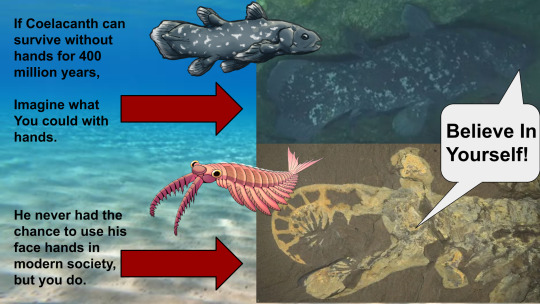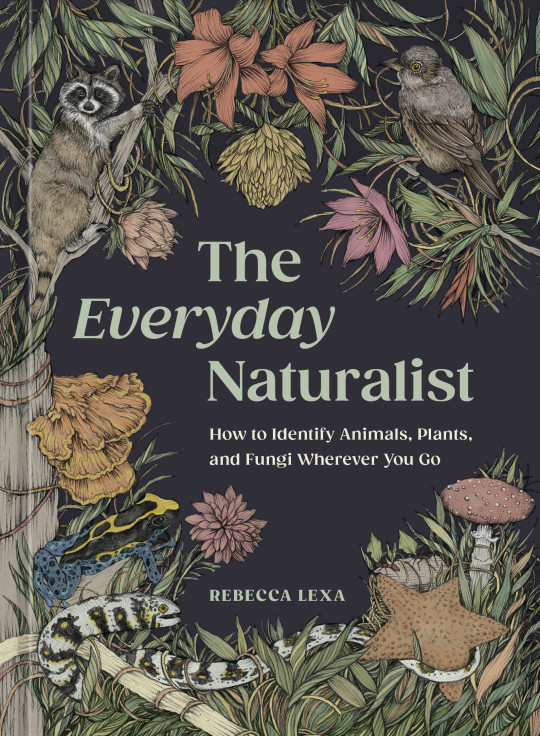#Natural History
Explore tagged Tumblr posts
Text
Yep, that,s right

18K notes
·
View notes
Text

Sure, why the heck not? Likes, reblogs, and comments all count; my writing focuses on various elements of natural history, written for a general audience, on topics ranging from invasive species to nature identification to foraging and more.
Here, I'll start with my very first article on my website: The Importance of Native Pollinators.
#writing#writer#writblr#writers of tumblr#author#writerscommunity#published author#nature#wildlife#animals#plants#fungi#natural history#ecology#invasive species#foraging#mushrooms
87 notes
·
View notes
Text


DRACOVENATOR
From my new video about Basal Theropods . South African relative to Dilophosaurus
___
Youtube channel
Instagram
Prints and more paleoart merch
#dracovenator#theropoda#paleoart#dinosaur#natural history#paleontology#scientific illustration#jurassic
51 notes
·
View notes
Text



Potamon sp. Crab Fossil; Pleistocene Epoch (2.58 - 0.012 MYA)
#fossil#fossils#crab fossil#prehistoric#collectible fossil#fossil collection#sea fossil#marine biology#marine fossil#special collections#collectibles#crystals#geology#rocks and minerals#stone aesthetic#paleontology#naturalhistory#evolutionarybiology#natural#natural history#natural life#marine animals#gemstones#sea creatures#sea life#marine life#sea animals
9K notes
·
View notes
Text
Incredible artist Julia Stoess makes these giant 100:1 insect models, I have never seen something more beautiful !



Definition of mastering your craft, they are PERFECT
#this would be my dream job fr#entomology#bugblr#model making#art#natural history#insects#think i cried a little when I found her website because I loved them so much oops#coleoptera#beetles#bees
16K notes
·
View notes
Text

Imagine a pinecone as heavy as a bowling ball and the size of a chihuahua. Believe it or not, such pinecones exist—and they belong to the coulter pine (Pinus coulteri), a conifer that can be found in parts of North America including California and Mexico. Infamous among loggers and foresters, this tree is nicknamed "the widowmaker" because of the unlucky individuals who met their fate as a result of its falling pinecones. This species produces some of the largest pinecones on the planet, weighing up to 11 lbs (5 kg).
Photo: damontighe, CC BY-NC 4.0, iNaturalist
#science#nature#natural history#fact of the day#did you know#plants#pine cones#fun facts#trees#conifer#pine trees
6K notes
·
View notes
Text

go grandpa
9K notes
·
View notes
Text

little heterodontosaurus waking up from a nap for day 12 :3
#art#digital art#sombertide art#paleoart#paleontology#natural history#dinosaur#heterodontosaurus#dinovember#dinovember 2024#heterodontosauridae
1K notes
·
View notes
Text





Tiny curio collections in walnut shells! Debuting at the demon Kitty Designs booth at the Cincinnati World Oddities Expo on Saturday (1/10/25) and coming soon to my Etsy (check link in bio!)
#oddities#vulture culture#miniatures#in a nutshell#walnut shell#goblincore#cabinet of curiosities#natural history#curio collection#curio#tiny things
971 notes
·
View notes
Text










Roccella phycopsis
Litmus
So you've probably heard of a litmus test. Ever wondered what that is? Well a litmus test is a chemical test used to figure out if substance is acidic or basic, and litmus (from Old Norse meaning "moss used for dying,") is derived from lichens!!! It is unclear exactly which Roccella lichens were originally used to make litmus (people weren't so careful about species ID back in the day, ya know?), but R. phycopsis is among the original litmus lichens. This fruticose lichen has terete, erect branches which grow in small tufts out of a basal holdfast attached to costal rock, cliffs, walls, and shrubs. It is pale gray-brown, and has bulging or spikey soralia producing white soredia. The basal holdfast has a characteristic orange or ochre medulla (internal layer of fungal hyphae). R. phycopsis is rather rare, likely due in part to overharvesting for its use as a source for purple dye stretching back to the Roman empire! And inevitably due to the destruction of suitable costal habitat. So yeah, I hope y'all learned something new today, and the next time someone mentions a "litmus test," interrupt whatever they are saying in order to share this fun fact, and encourage them to conserve costal habitats for the preservation of these special little guys.
images: source
info: source | source | source | source
#lichen#lichens#lichenology#lichenologist#mycology#ecology#biology#fungi#fungus#Roccella phycopsis#Roccella#symbiosis#symbiotic organisms#algae#lichen dying#nature#nature dye#natural history#beautiful nature#weird nature#the natural world#life science#environmental science#I'm lichen it#lichen a day#daily lichen post#lichen subscribe#lichens that look like critters
868 notes
·
View notes
Text

A gang of Tazoudasaurus naimi on parade in Morocco during the Early Jurassic 🦕🦕🦕🦕
#dinosaur#illustration#paleoart#paleontology#paleoillustration#paleoblr#palaeoblr#art#palaeontology#dinosaur art#dinosaurs#sciart#dinosauria#sauropodiformes#sauropodomorph#sauropod#saurischian#jurassic world#jurassic period#prehistoric#prehistoric planet#morocco#paleoartist#palaeoart#earth history#natural history
561 notes
·
View notes
Text

#shitpost#random#idk lol#funny#lol#humor#funny memes#meme#marine biology#marine life#anomalocaris#coelacanth#fish#ocean#natural history#fossils
2K notes
·
View notes
Text

After much consideration, it has become apparent that the original image is slightly outdated due to the discovery of a new species and advancements in technology to research cellular life. Therefore, we have determined this new species, the space niche, is an offshoot of the transitional and aquatic niches. It is suspected this is due to the similar facial structure and anatomy of the aquatic niche, as well as the adaptation to combat shown in the evolution from the transitional forme to the underground niche, as well as the agility and dexterity capabilities shown in the former. As for the shared ancestor, shared similarities have been found between it and it’s offshoots, as well as having the capability of life that can adapt to new environments.
#Ori#ori the game#ori and the will of the wisps#ori and the blind forest#Rain world#slugcat#rw slugcat#rw#rainworld#rain world slugcat#rain world survivor#nine sols#wei ying#tbh creature#tbh#conways game of life#Hollow knight#ghost hk#the knight hk#Baba is you#toby fox#Undertale#Toby dog#Undertale dog#Evolution#biology#science#natural history#Very complex science#White creatures from indie games
758 notes
·
View notes
Text
youtube
NEW VIDEO!
Theropods are a diverse group of bipedal, generally carnivore Dinosaurs that emerged in the Triassic Period. To this group belongs the only Dinosaur clade that still exists today: Birds.
This video shows some of the most primitive members of this lineage, when they started to diversify into more derived groups.
___
Youtube channel
Instagram
Prints and more paleoart merch
28 notes
·
View notes
Text

Okay, so The Everyday Naturalist is up on the Ten Speed Press and Penguin/Random House's websites (and various other public places), so I can FINALLY show you the cover!!! I have been saying for months that this book is going to be absolutely beautiful (in addition to informative!), and now you get a good taste of that. Ricardo Macia Lalinde is an incredibly skilled artist whose natural history studies will grace not only the cover but the interior of the book; I feel incredibly fortunate to have his work included in this project.
Here's a bit more about the book itself: "If you’ve ever consulted a field guide to identify a new bird at your feeder, you know the process isn’t as easy as it sounds. In fact, it seems like you have to know a lot about that mystery bird to even figure out where to start.
"The Everyday Naturalist fills in the gaps by explaining what traits to pay attention to when encountering a new species; how and when to use field guides, apps, and other resources; what to do if you get stuck; and more. Rather than focusing on one region or continent, these skills and tools are designed to help you classify nature anywhere you are—whether on familiar territory, traveling, or in a new home."
The book has officially gone to press with a release date of June 17, 2025. Which means in half a year we can all have physical copies in hand! I haven't yet been able to talk to the marketing folks at the publisher to find out whether I can personally take preorders for signed copies, but I'll keep you posted--in the meantime you can preorder at the bookstore of your choice, online or brick and mortar.
#The Everyday Naturalist#naturalist#nature#natural history#animals#plants#fungi#nature identification#science#scicomm#educational#wildlife#ecology
479 notes
·
View notes